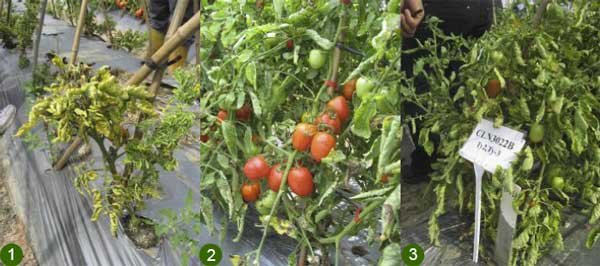Tainan, Taiwan
May 29, 2009
Source:
AVRDC - The World Vegetable
Center - Newsletter
 |
|
Dr. Hanson explains the gene pyramiding process,
based on marker-assisted selection. |
Dr. Peter Hanson, Global Theme
Leader, Breeding, shared details of a recent breakthrough in
developing disease-resistant tomatoes in a seminar on 22 May and
a field demonstration on 26 May at AVRDC headquarters.
Through “gene pyramiding”— introgressing multiple Ty genes from
wild tomato species Solanum habrochaites and S. chilense into
AVRDC lines—breeders have developed lines with resistance to
several whitefly-transmitted begomoviruses, which cause Tomato
yellow leaf curl virus disease.
In the tropics and subtropics, TYLCVD leads to 100% crop loss if
the infection occurs at an early stage, and farmers often misuse
pesticides in an attempt to control the disease.
“AVRDC is the first to develop and distribute openpollinated
lines with Ty resistance for small-scale farmers,” says Dr.
Hanson. Multilocation trials are ongoing in Mali and Tanzania,
and in July will begin in Karnal, north India.
Ty-resistant varieties must also satisfy yield and fruit quality
requirements of farmers and markets.
Socioeconomics researcher Dr. Simone Kathrin Kriesemer
will conduct participatory evaluations with farmers in Karnal to
help determine which varietal traits are most important and how
economic standing, gender or other factors affect farmers’
choice of tomato variety.
 |
|
Tomato devastated by
TYLCVD. |
The ‘Saladeer’ type of
tomato with its distinctive blocky shape is
preferred by farmers in the tropics. |
A line with two Ty
genes shows some resistance. |
|
|